Naples itself isn’t a location that most people recommend touring (a tourist was shot there a few years back) so we decided to venture outside the city to Pompeii and the Amalfi Coast. Like we did in Florence and Rome, we once again opted to book a Rome in Limo tour to maximize our time.
Our guide picked us up at 8am and took us around for 9 hours for 74 Euro ($103). It was totally a bargain considering he drove on the panic inducing cliff highway along the Amalfi Coast. I was peeing my pants just sitting in the back. I can’t imagine what it’s like to be responsible for driving a van full a people through these hairpin turns.
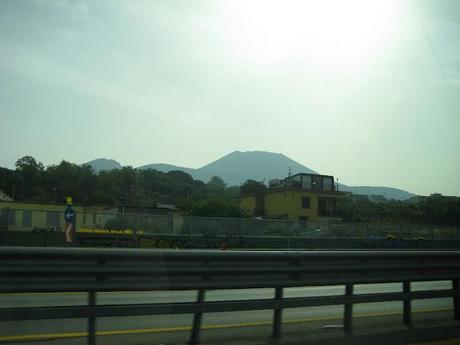
Mt. Vesuvius from our van
Anyway, after packing everyone into the van, we headed out for our 30 minute journey to Pompeii. Of all of our Rome in Limo drivers, I think this one had to be the quietest. He literally didn’t talk the entire drive, which was semi understandable when he was focusing on driving in the Amalfi Coast. I thought maybe we would get a little history lesson on the way to Pompeii but he didn’t really say anything. Maybe, he just wanted to save it for our Pompeii guide?
When we arrived at Pompeii, we met up with the guide that Rome in Limo had arranged for us. She was freaking hilarious. I definitely recommend getting a guide for Pompeii. Our guide was 9 Euro a person, which include a headset that picked up her microphone. Our experience in Pompeii wouldn’t have been nearly as memorable without her stories and guidance. On top of that Pompeii is huge so it would be very easy to get overwhelmed and lost without a guide.
After getting our headsets situated and paying for our admission (11 Euro a person and they will only accept exact cash), we started our tour of Pompeii.
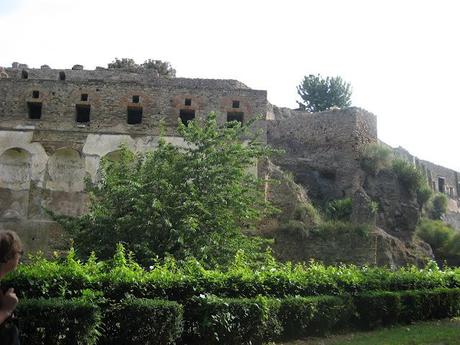
Before we entered the gates, our guide gave us some background about the area.
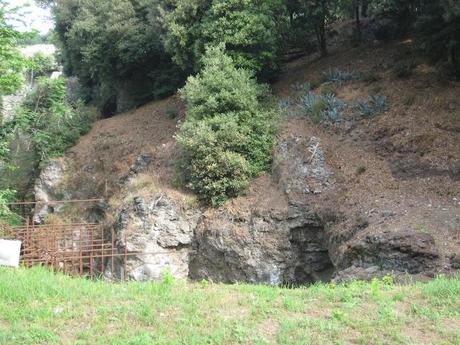
Pompeii was buried under 13 to 20 feet of ash and pumice after Mount Vesuvius erupted in 79 AD. This ancient city was not discovered until 1700 years later in 1749.
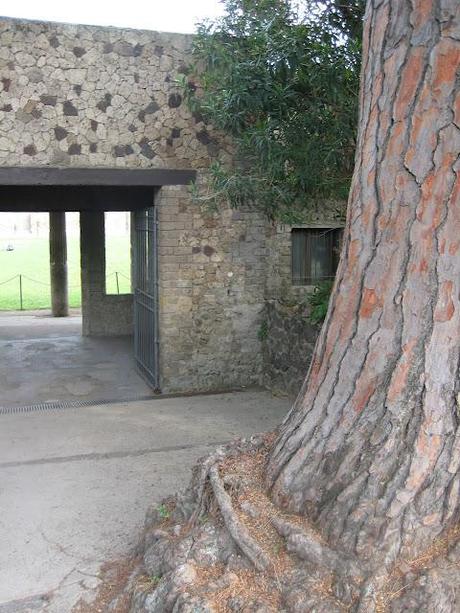
The ash and pumice served as a great preserver and many of the buildings look just as they did in the 1st century. Walking through the streets in Pompeii is like being sent on a time machine back to a relatively untouched Ancient City.
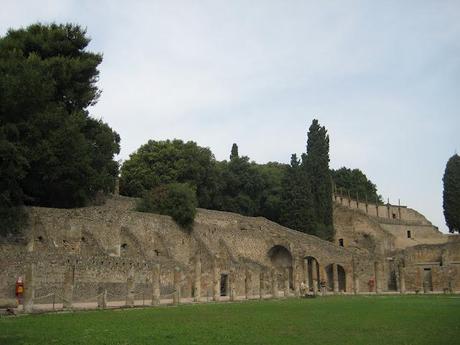
Upon entering Pompeii, we were met by the ludus. This was the Roman gladiator school, where students trained to fight in the Roman games.
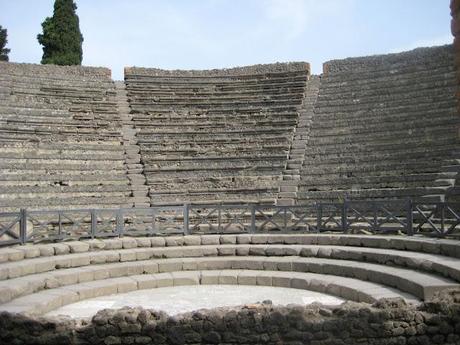
Next, we walked over to the amphitheater. This amphitheater, built in 70 BC, was the first to be built out of stone.
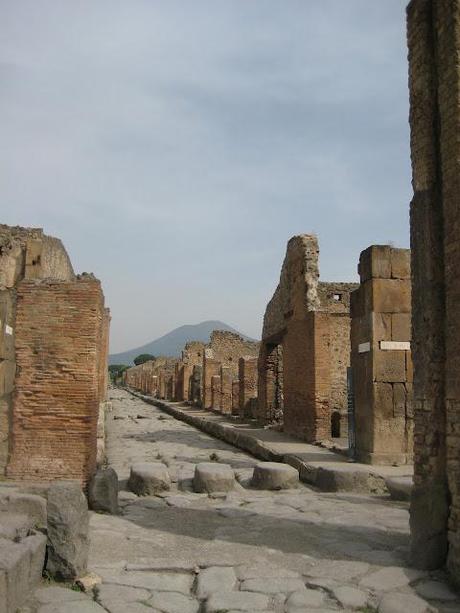
As we walked further into the city, our tour guide explained the street structure. From the picture above, you see large stepping stones. These were used by pedestrians to avoid getting their feet wet or dirty. The stones were set a carriage’s width apart, so you can easily figure out if a street is a one way or two way depending on the number of pedestrian stones.

You can also see from these pictures the grooves that were caused by repeated carriage traffic. They are pretty severe indentations, serving as a testament to just how lively this city was before it was tragically buried by lava.
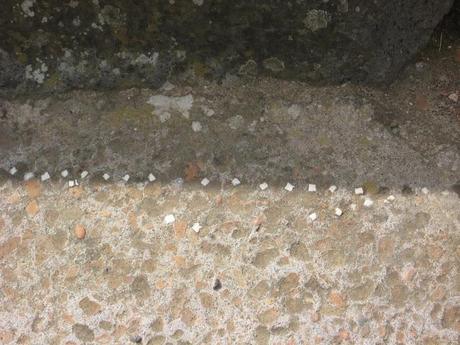
The Romans also had their own pseudo street lights. As you can see above, they lined the sidewalks with white tiles on the edge. These tiles reflected the moonlight in the evening, illuminating the path.
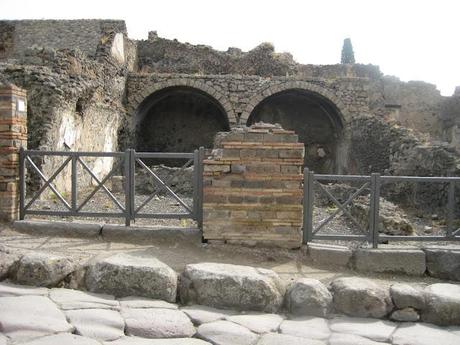
As we moved along the street, our tour guide pointed out the different businesses that would have lined the street. Above would have served as a bakery.
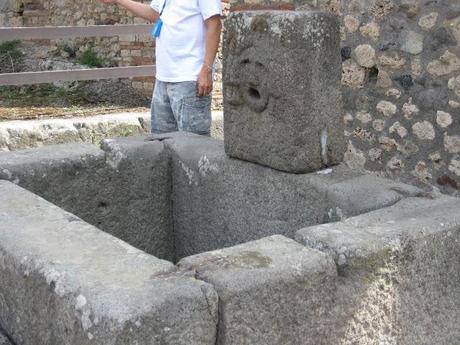
At the intersection of the streets, we often found a water fountain. These public fountains provided water to everyone and were continuously running.
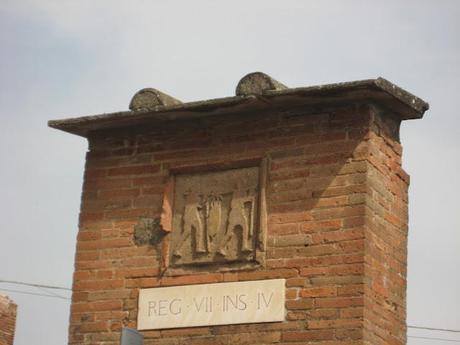
The streets were also very distinctly marked, with goat insignia built into the walls. It’s amazing to think how sophisticated they were over 2000 years ago.
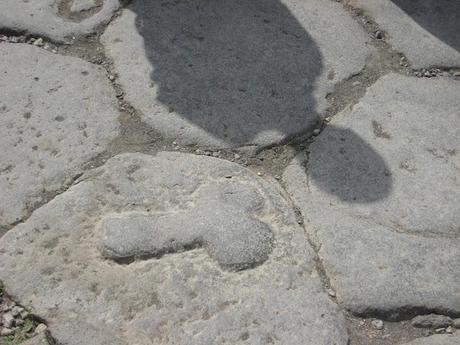
One of the most famous houses in all of Pompeii is certainly the brothel. Leading us in its direction were these very subtle genitalia carvings in the street.
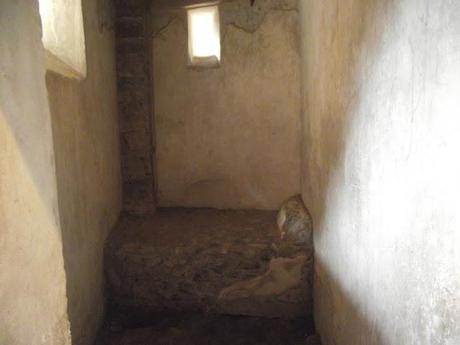
Inside the brothel, we saw the cozy accoutrements, including these insanely small rock beds where the magic happened.

The brothel also had a menu conveniently painted above the rooms so that clients could easily select their needed services.
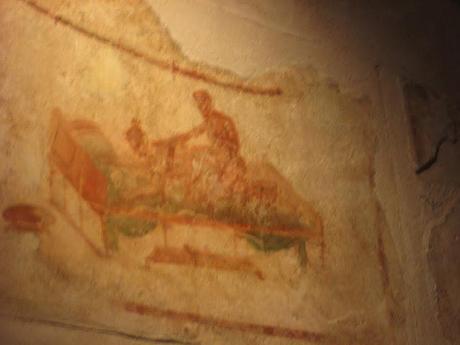
Pretty graphic, no?

Some of the fancier houses had two stories. Most of these buildings, however, had difficulty staying up over time, hence the scaffolding.
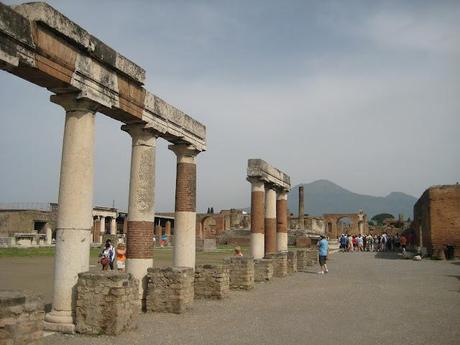
Eventually, we made our way over to the forum.
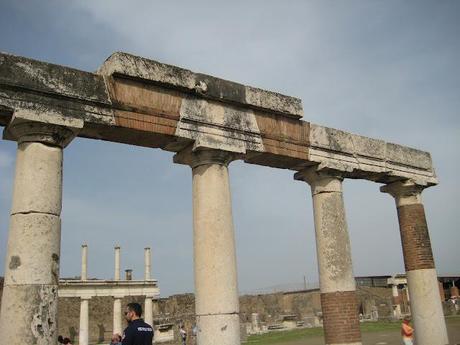
The forum was surrounded by columns on either side that were built during the Samnite age.
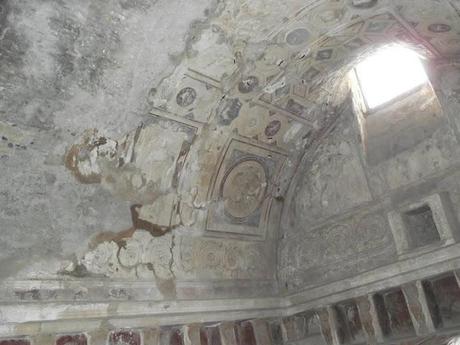
Located near the forum were the Baths.
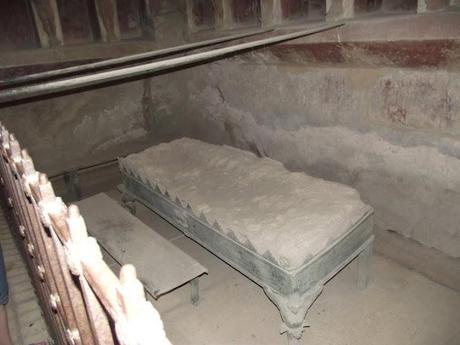
Patrons would start in the changing room.
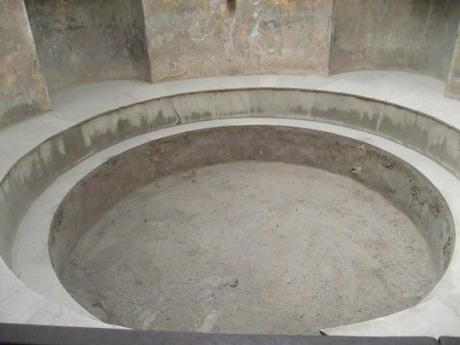
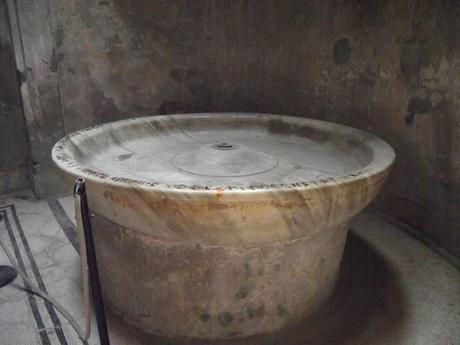
Then move to the bathing rooms, with three different areas, Frigidarium (cold baths), Tepidarium (warm baths) and Calidarium (steam baths).

The forum also had temples surrounding it. This was a temple to Jupiter.
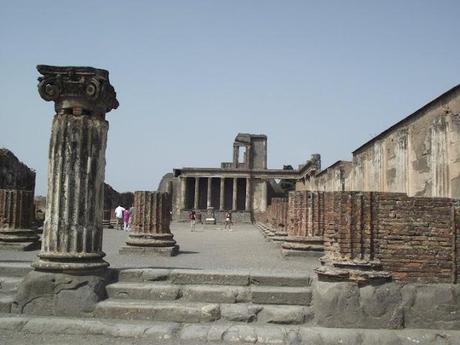
This was the basilica.

We also walked into a courtyard that was adjacent to the forum to view some plaster mummies.
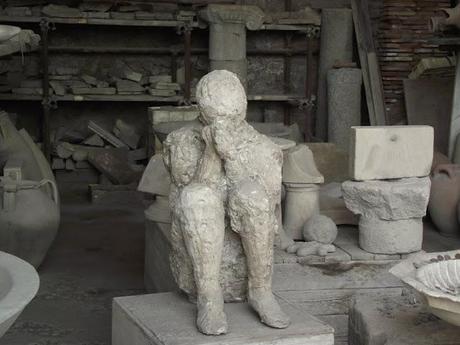
The mummies are in the same positions in which they died (some are pretty horrifying). They were created by adding plaster to air pockets found during the excavation. When the bodies decayed beneath the ash, they formed air pockets that didn’t collapse. Excavators then filled these air pockets with plaster to form the mummies you see.
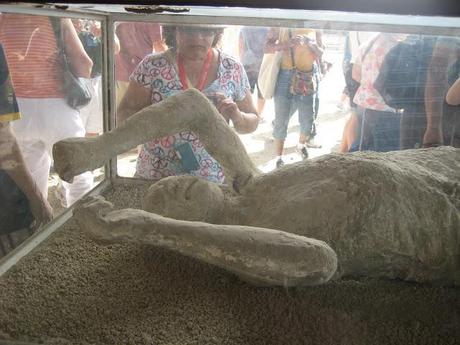
After seeing the creepy mummies, we moved onto another house.
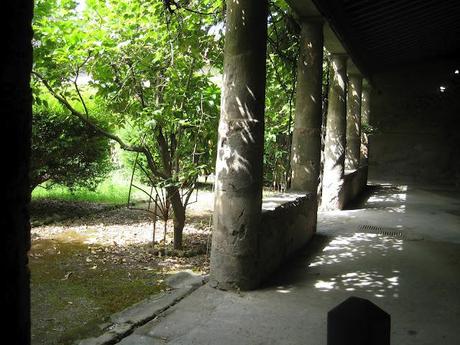
With a beautiful outdoor courtyard.
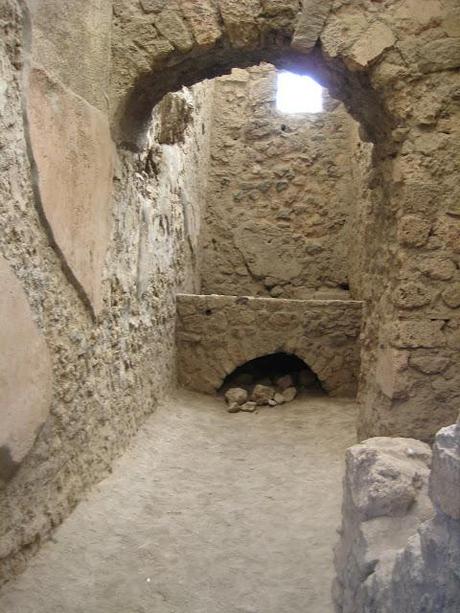
A lovely fireplace nook.
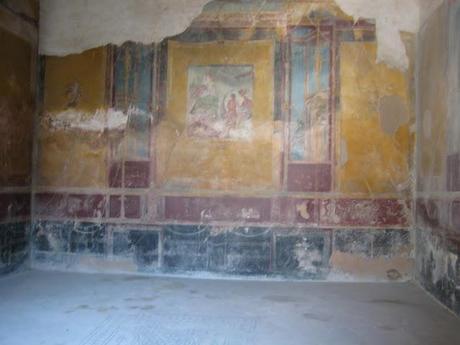
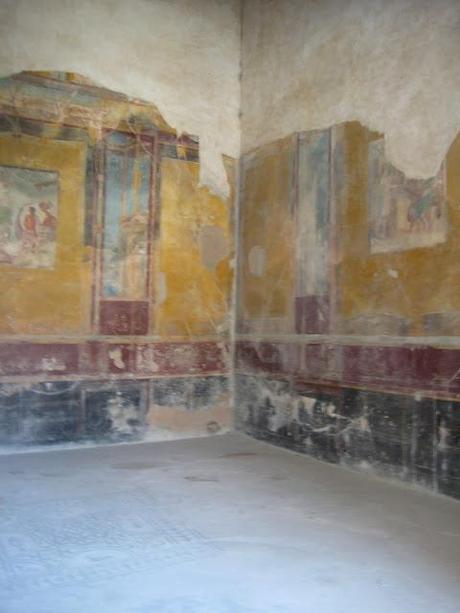
And this beautifully frescoed wall.

After we finished with the villa, we headed back over to the forum to take some more pictures.
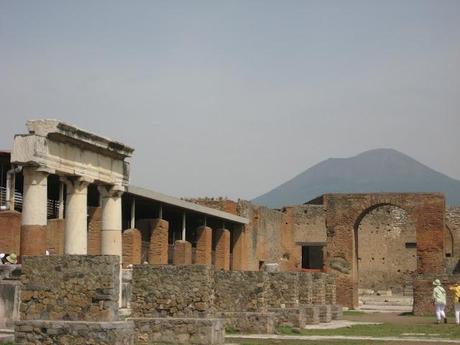
It slowly started to hit me just how amazing Pompeii is. At first, I thought I was going to be really creeped out by it, literally thousands of people died in this location, but I was more fascinated than anything.
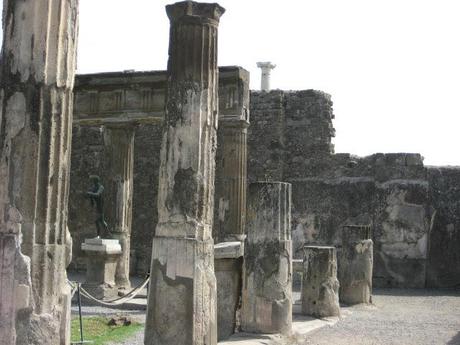
I kept imagining what it would have been like to see the streets filled with carriages and the fountains overflowing with water. The sophistication of Ancient Roman cities is really something to behold.
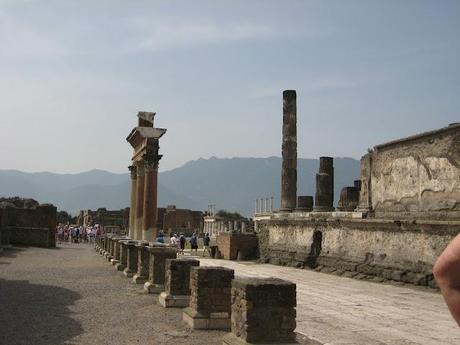
After we snapped our last pictures, our guide took us back to the entrance so we could continue onto the Amalfi coast.
I would definitely recommend going to Pompeii. It’s seriously a place frozen in the past.
Also, I would definitely recommend using a guide. Pompeii is really crowded. A guide will know which places to hit first and where to go if one location is full. They will also yell at other guides in Italian when they’ve cut the line or broken the rules (always a good thing).
You also want to bring some water with you. Pompeii doesn’t have very much shade (that’s what happens when a city gets buried underground for 2000 years) so you will be standing in the blazing sun for hours without any respite. I thought our tour guide was being a little dramatic about the heat warnings but I can attest to the fact that out of anywhere we went this was probably the hottest because you couldn’t escape the sun. Make sure you stay hydrated and wear your sunblock.
And finally, make sure you bring your imagination with you. Pompeii takes a life of its own when you start to dream about its inhabitants and their everyday lives. It’s something that will stick with you far after you leave.
What You've Missed:MonacoPisa Florence
Ancient RomeVatican Museums Sistine ChapelSt. Peter's Basilica
Up Next: Amalfi Coast
